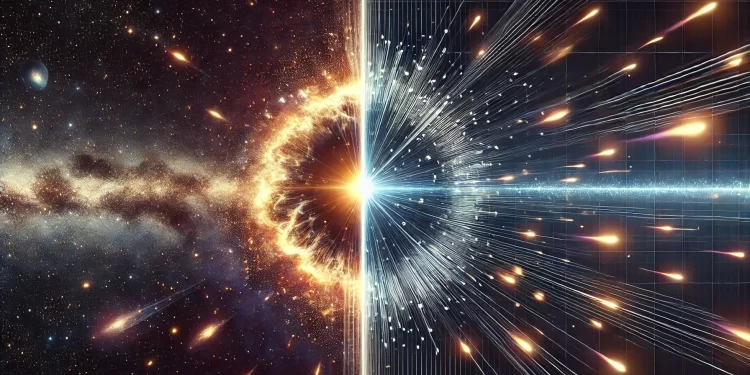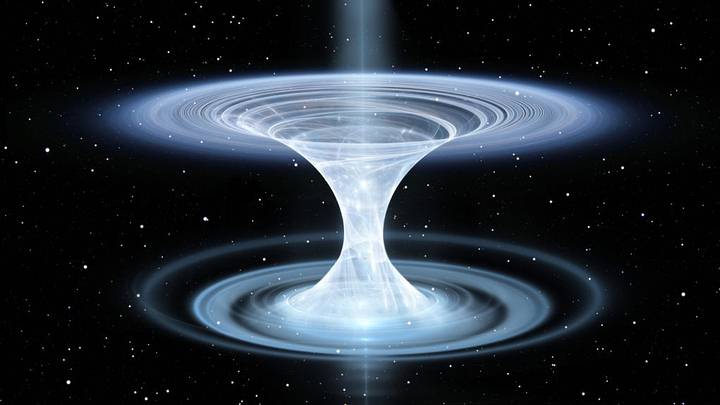For decades, the Big Bang theory has been the leading explanation for the origin of the universe, positing that everything began from a single point approximately 13.8 billion years ago. But recent discoveries are shaking the foundations of this long-standing theory. What if, despite its wide acceptance, the Big Bang isn’t the full story? With our understanding of the cosmos still evolving, scientists are now reexamining alternative explanations—one of which has gained renewed attention thanks to the remarkable observations made by the James Webb Space Telescope (JWST).
A New Perspective on the Universe’s Expansion
Professor Lior Shamir of Kansas State University has reignited interest in the nearly century-old “Tired Light” theory—a model first proposed by Swiss astronomer Fritz Zwicky in the 1920s. While Zwicky’s theory was largely overshadowed by the Big Bang, Shamir’s recent study, published in Particles, suggests it may hold more relevance today than ever before. Zwicky’s idea posits that light photons lose energy as they travel through space, causing the redshift observed in distant galaxies, not because they’re speeding away from us, but because the light itself has “tired.”
This contrasts with the Big Bang model, where redshift indicates that galaxies are receding from Earth due to the universe’s expansion. Shamir’s study, utilizing data from over 30,000 galaxies, challenges the standard interpretation of redshift and suggests that distance plays a key role in how light behaves over vast cosmic distances.
When NASA launched the James Webb Space Telescope, scientists expected it to offer glimpses of a young, developing universe—evidence that would reinforce the Big Bang theory. However, what they found were mature galaxies that appeared far older than current Big Bang timelines would allow. According to Shamir, “The JWST provided deep images of the very early universe, but instead of showing an infant cosmos, it revealed large and mature galaxies, which raises significant questions about our conventional understanding of the universe’s origin.”
The discovery that galaxies at the universe’s edge are as fully formed as those closer to Earth calls into question the timeline proposed by the Big Bang model. Could it be that these galaxies have existed much longer than we thought? Or is it possible that light behaves differently over time than previously assumed?
Revisiting “Tired Light” in Light of New Evidence
Shamir’s study took a closer look at the redshift of galaxies rotating in different directions relative to the Milky Way. His findings were striking: galaxies rotating in the opposite direction to our galaxy showed a lower redshift than those rotating in the same direction. More intriguingly, this difference grew with distance. Shamir believes this supports Zwicky’s Tired Light theory, which predicted that light would lose energy as it travels, explaining the apparent increase in redshift over greater distances.
While this doesn’t completely overturn the Big Bang theory, it does suggest that there might be more factors at play in understanding how the universe behaves. If redshift is not solely a result of the universe expanding, our entire framework for cosmological models may need to be reexamined.
What’s Next for Our Understanding of the Cosmos?
The “Tired Light” theory and Shamir’s research prompt scientists to rethink long-held assumptions. Although the theory isn’t close to replacing the Big Bang model, the questions it raises are crucial for future studies. Could it be that our understanding of the universe’s expansion is based on incomplete or incorrect assumptions? And if so, what does this mean for the future of cosmology?
The James Webb Space Telescope has opened a new window into the cosmos, and as more data comes in, we can expect to see more challenges to established theories. Perhaps, as Shamir suggests, it’s time to look beyond the Big Bang and explore alternative models to fully grasp the nature of our universe.











